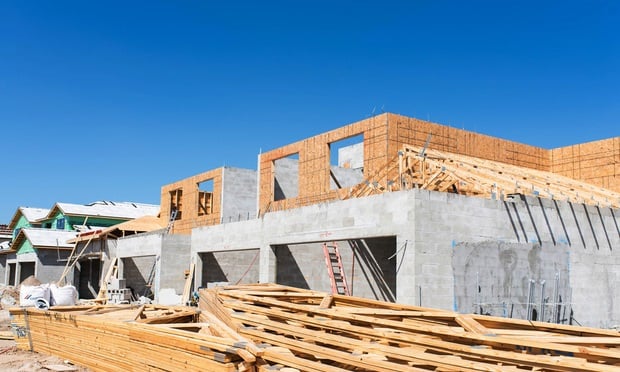
NEW YORK CITY—Giving traditional brick-and-mortar store owners cause for a moment of smugness, online retailers are aggressively looking to create physical storefronts to complement their web brands, according to a JLL's Screens to Stores report, released Monday at the International Council of Shopping Centers' National Deal Making conference here.
Further, there will be even more online retailers experimenting with physical locations in the next five years, the research states. Meanwhile, traditional retailers continue to evolve their businesses to be more online and mobile friendly.
“E-tailers see the need to move their businesses into physical locations in order to grow sales and further market their brands, but the process of expanding into brick-and-mortar stores is an emerging discipline,” said James Cook, director of retail research, JLL. “Online retailers must be thoughtful as they select physical locations to preserve their brand image and keep their business profitable. Whether it's testing potential retail locations with pop-up shops to an eventual national roll-outs of stores, every step in the growth process counts.”
JLL analyzed 51 e-tailers that are translating their brand offline and found there are four key phases of e-tailers' evolutions:
Experimentation with pop-up locations in dense urban markets: Since long-term leases can be a daunting commitment for an online-only retailer, pop-up shops—for which agreements can range from a day to a six-twelve months—provide the delicate balance e-tailers' need. According to the report, just 14% of e-tailers studied are in this first phase.
A handful of strategic permanent stores: Post- pop-up, the next step is to commit to a permanent storefront, which is typically a solo flagship that personifies an online retailers' best qualities and products. JLL found that approximately 63% of e-tailers opened their first permanent store in a prime urban corridor, with nearly one-third opening their first store here.
“New York's density and diversity provides a general baseline for success, which is why we see it as the top market for e-tailers to test their brand receptivity,” asserts Erin Grace, managing director of retail for JLL here. “It's likely that as the gap between rent expectations narrows and rebalances in Manhattan we'll see an uptick in new-to-market concepts taking space.”
Roll-Out across top cities: After testing out one physical location, the next step is to open two to 10 strategic stores. Primary markets typically take priority, but up-and-coming secondary markets, like Portland and Austin, are occasionally added to the mix. More locations means more customers can connect with a brand. A JLL survey of 500 US consumers found that 40% agreed—or strongly agreed—that they would be more likely to buy clothing or accessories online from a retailer that has a physical store in their area.
Full-fledged fleet of stores: The last phase for an e-tailer's physical migration is a national roll-out of stores on street level and in shopping centers. One-quarter of the e-tailers analyzed by JLL are at this stage, with 11 or more stores. Once this point has been achieved, e-tailers turned retailer continue to build their brand and seamlessly integrate their online platform into their brick-and-mortar presence.
“Online retailers are slowly realizing that nothing packs the marketing punch like a physical store in a strategic location,” said Cook. “Those that sell apparel and accessories find real stores especially attractive. What we have seen so far is just the beginning.”

Further, there will be even more online retailers experimenting with physical locations in the next five years, the research states. Meanwhile, traditional retailers continue to evolve their businesses to be more online and mobile friendly.
“E-tailers see the need to move their businesses into physical locations in order to grow sales and further market their brands, but the process of expanding into brick-and-mortar stores is an emerging discipline,” said James Cook, director of retail research, JLL. “Online retailers must be thoughtful as they select physical locations to preserve their brand image and keep their business profitable. Whether it's testing potential retail locations with pop-up shops to an eventual national roll-outs of stores, every step in the growth process counts.”
JLL analyzed 51 e-tailers that are translating their brand offline and found there are four key phases of e-tailers' evolutions:
Experimentation with pop-up locations in dense urban markets: Since long-term leases can be a daunting commitment for an online-only retailer, pop-up shops—for which agreements can range from a day to a six-twelve months—provide the delicate balance e-tailers' need. According to the report, just 14% of e-tailers studied are in this first phase.
A handful of strategic permanent stores: Post- pop-up, the next step is to commit to a permanent storefront, which is typically a solo flagship that personifies an online retailers' best qualities and products. JLL found that approximately 63% of e-tailers opened their first permanent store in a prime urban corridor, with nearly one-third opening their first store here.
“
Roll-Out across top cities: After testing out one physical location, the next step is to open two to 10 strategic stores. Primary markets typically take priority, but up-and-coming secondary markets, like Portland and Austin, are occasionally added to the mix. More locations means more customers can connect with a brand. A JLL survey of 500 US consumers found that 40% agreed—or strongly agreed—that they would be more likely to buy clothing or accessories online from a retailer that has a physical store in their area.
Full-fledged fleet of stores: The last phase for an e-tailer's physical migration is a national roll-out of stores on street level and in shopping centers. One-quarter of the e-tailers analyzed by JLL are at this stage, with 11 or more stores. Once this point has been achieved, e-tailers turned retailer continue to build their brand and seamlessly integrate their online platform into their brick-and-mortar presence.
“Online retailers are slowly realizing that nothing packs the marketing punch like a physical store in a strategic location,” said Cook. “Those that sell apparel and accessories find real stores especially attractive. What we have seen so far is just the beginning.”
© Touchpoint Markets, All Rights Reserved. Request academic re-use from www.copyright.com. All other uses, submit a request to [email protected]. For more inforrmation visit Asset & Logo Licensing.








